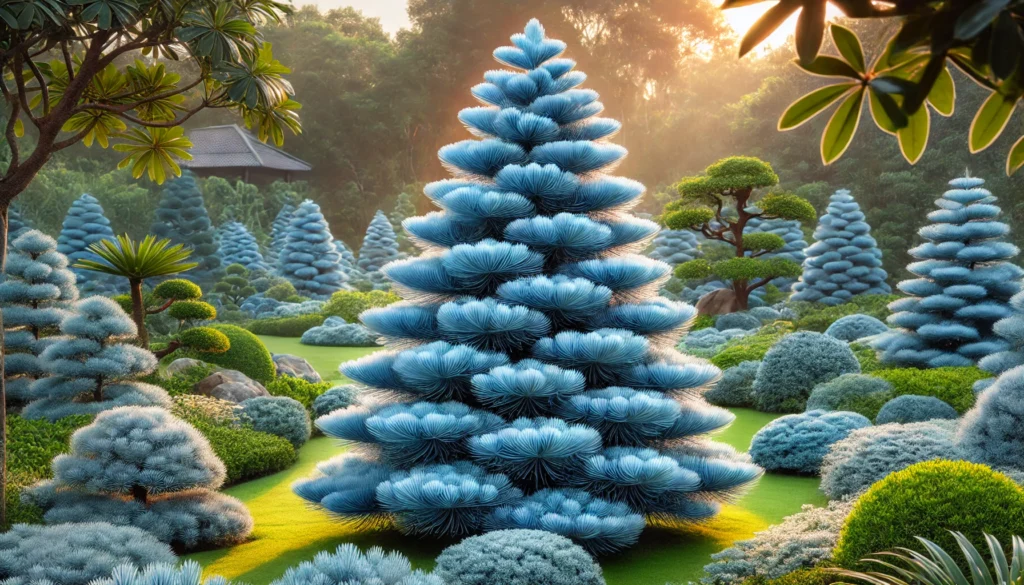
How to Care for a Blue Pine Tree: Essential Tips for Healthy Growth and Vibrant Color
If you’ve ever admired the striking beauty of a blue pine tree, you’re not alone. 
In this article, we’ll guide you through everything you need to know about how to care for a blue pine tree, ensuring it stays healthy, vibrant, and full of life for years to come. Whether you’re a beginner gardener or a seasoned green thumb, these essential tips will help you nurture your blue pine tree to its fullest potential. Ready to create a picture-perfect landscape? Let’s dive in!
Table of Contents
ToggleUnderstanding Your Blue Pine Tree 
The Blue Pine Tree, also known as Pinus parviflora, is a striking and hardy evergreen that brings a touch of elegance and beauty to any landscape. With its silvery-blue needles, it stands out in your garden or yard, creating a serene and vibrant focal point. But to keep your Blue Pine tree healthy and vibrant, it’s essential to understand its unique needs.
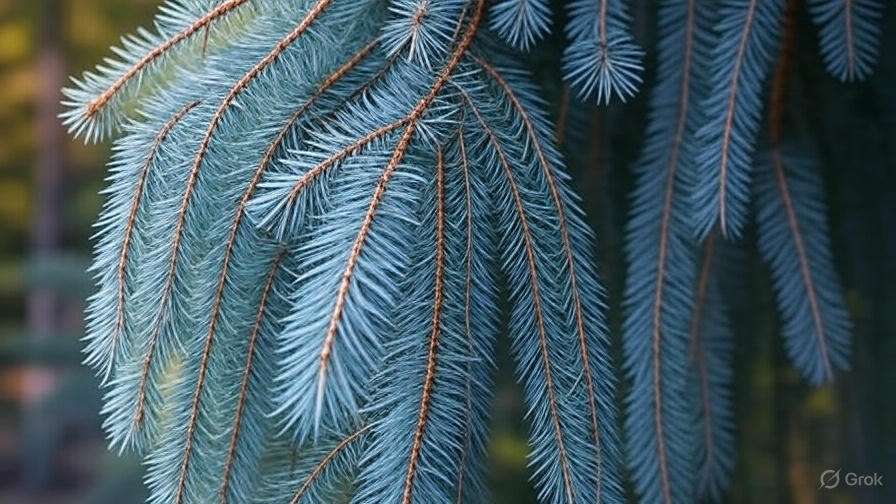
1. Ideal Growing Conditions 
Blue Pine trees thrive in areas with full sunlight. They prefer well-drained, sandy or loamy soil that is slightly acidic. A spot with at least 6 hours of direct sunlight each day is perfect for them. Ensure the soil doesn’t stay too wet or compacted, as this can lead to root rot.
2. Size and Growth Rate 
Blue Pines are slow-growing trees. They can reach heights of 30-50 feet, depending on their environment, so make sure you give them enough space to grow both upwards and outwards. The tree’s dense, narrow canopy makes it a great choice for privacy screens or windbreaks.
3. Watering Needs 
While the Blue Pine is drought-tolerant once established, it still needs regular watering, especially during dry spells. Water deeply once a week during the summer months, but avoid over-watering, which can damage the roots. Keep the soil evenly moist but not soggy.
4. Temperature Tolerance 
Blue Pine trees are hardy in USDA zones 4-7, which means they can withstand cold temperatures and harsh winters. However, they don’t do well in areas that experience excessive heat and humidity. Ensure the tree is in a location that remains cool during the summer months to keep it thriving.
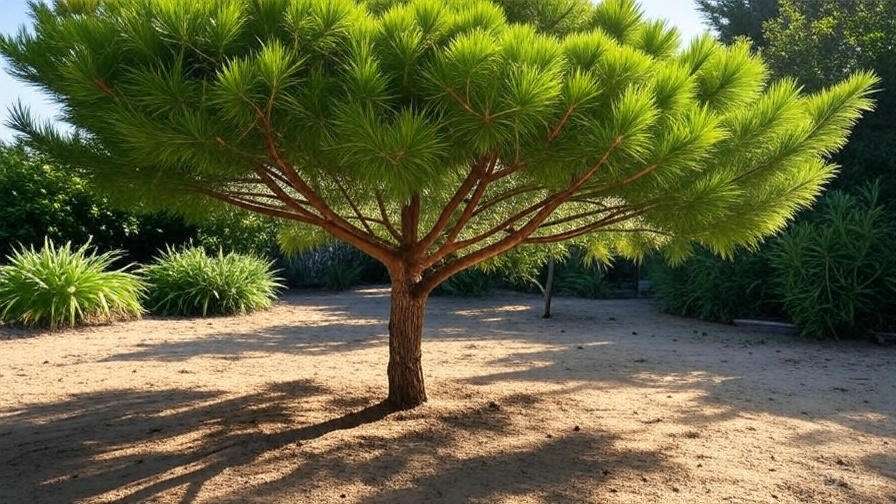
5. Pruning and Maintenance 
Pruning isn’t necessary for the Blue Pine, but if you want to maintain a clean appearance, trim off any dead or damaged branches. This will also help improve air circulation and reduce the risk of pests. Make sure to prune during late winter or early spring to avoid disrupting its growth cycle.
By understanding these basics about your Blue Pine, you’ll be well on your way to nurturing a healthy, beautiful tree that adds year-round interest to your garden. With the right care and attention, your Blue Pine will thrive and reward you with its stunning, silvery-blue needles for years to come!
 Essential Care Tips for a Healthy Blue Pine Tree
Essential Care Tips for a Healthy Blue Pine Tree
Caring for a Blue Pine tree doesn’t have to be complicated. With the right steps, you can keep your tree healthy, strong, and beautifully blue all year round 
1. Choose the Right Spot 
Blue Pines love space and sunshine! Plant your tree in a location that gets full sun—at least 6 hours a day. Make sure there’s plenty of room around it so air can circulate, which helps prevent pests and disease.
Pro Tip: Avoid low-lying areas where water might collect and cause root rot.

2. Water Wisely 
Young Blue Pines need consistent watering—especially during their first two years. Aim for deep watering once a week, allowing moisture to reach the roots. For mature trees, water during long dry spells.


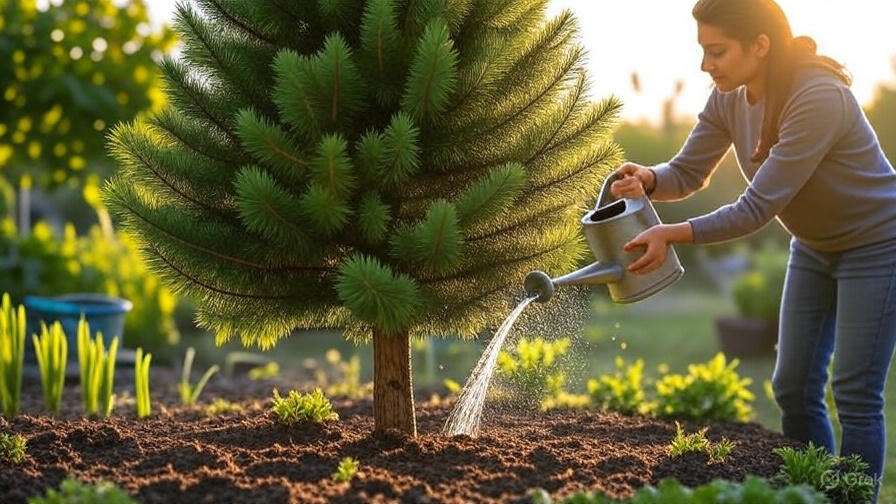
3. Feed for Vibrant Color 
To keep that signature blue glow, apply a balanced, slow-release fertilizer in early spring. Look for one labeled for evergreen trees, with micronutrients like magnesium and iron to boost color and needle health.
Frequency: Once a year is enough—don’t overdo it!
4. Mulch to Protect Roots 
Add a 2–3 inch layer of mulch around the base to retain moisture, regulate temperature, and suppress weeds. Keep mulch a few inches away from the trunk to prevent rot.
Best mulch: Organic options like bark, wood chips, or pine needles.
5. Prune with Purpose 
Prune your Blue Pine in late winter or early spring to remove dead or damaged branches. This helps the tree maintain its shape and stay healthy. Avoid heavy pruning—less is more!
Rule of thumb: Never remove more than 1/3 of the live branches in a single year.
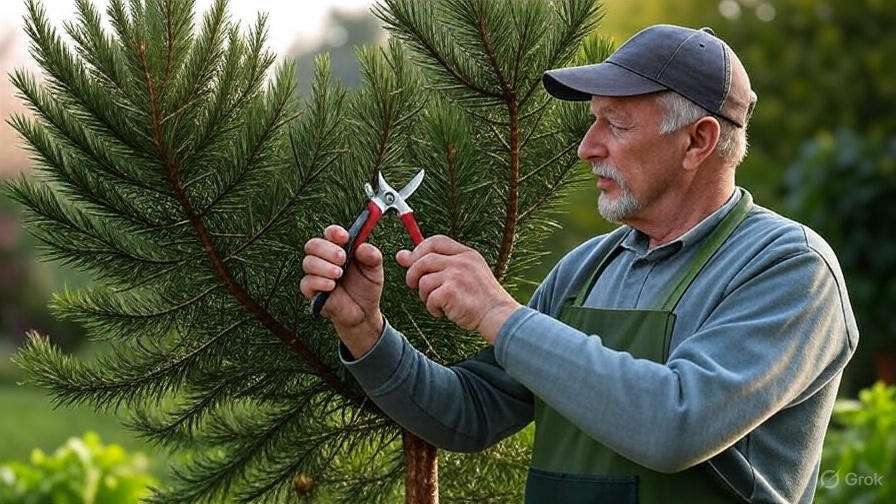
6. Watch for Pests and Disease 
Keep an eye out for common issues like pine needle scale, aphids, and fungal infections. Yellowing needles or sticky sap can be signs of trouble.

7. Support During Stressful Seasons 

- In winter, protect young trees from harsh wind and heavy snow with a burlap wrap or windbreak.
- During extreme heat, provide extra water and check for sunburned needles.
Final Thoughts
A healthy Blue Pine tree adds beauty and value to your landscape for decades. With a little time and consistent care, you’ll enjoy vibrant color and strong growth season after season. Follow these essential tips, and your Blue Pine will reward you with its signature silvery-blue charm!
Common Problems and How to Solve Them 
Blue Pine trees are beautiful and resilient, but like any plant, they can face a few issues. Here’s how to tackle the most common problems you’ll encounter and keep your tree thriving!
1. Yellowing Needles 
Yellowing needles are one of the most frequent issues. This could be caused by a few factors:
- Overwatering: Blue Pines don’t like soggy roots! Ensure the soil drains well, and only water when the top 2 inches of soil are dry.
- Nutrient Deficiency: A lack of essential nutrients can cause yellowing. Fertilize your Blue Pine in early spring with a balanced, slow-release fertilizer to promote healthy growth.
2. Browning Tips 
Brown tips on the needles might be due to environmental stress. Here’s what to check:
- Drought Stress: Ensure the tree is getting enough water, especially during hot, dry periods.
- Salt Burn: If you live in an area where roads are salted in the winter, salt can damage your tree. Consider rinsing the tree with fresh water after heavy snowfalls or using a salt-free de-icer nearby.
3. Pine Bark Beetles 
Pine bark beetles can infest Blue Pines and cause significant damage. Watch for:
- Small Holes or Sawdust: This is a telltale sign of beetle activity.
- Wilting or Drooping Branches: Infestation may cause branches to die off.
Solution: Apply insecticidal soap or neem oil to affected areas. In severe cases, you may need to trim off damaged branches to prevent the spread of the infestation.
4. Needle Drop 
It’s normal for Blue Pine trees to shed old needles, but excessive needle drop can be a sign of stress.
- Environmental Stress: Sudden temperature changes, poor soil, or damage to the roots can cause premature needle drop.
- Poor Soil Drainage: If the soil around the roots retains too much moisture, it can lead to root rot, affecting the tree’s ability to retain needles.
Solution: Improve soil drainage and ensure your tree is not overwatered. Also, avoid planting too close to other trees or structures that may compete for nutrients and space.
5. Fungal Infections 
Fungal diseases, such as pine rusts or blights, can cause issues with Blue Pine trees.
- Discoloration or Spots on Needles: Look out for unusual markings, which can be indicative of fungal problems.
- Dieback: If you notice the tree’s branches are dying back or becoming sparse, fungal infections could be the cause.
Solution: Regularly prune dead or diseased branches to improve airflow. Consider using a fungicide if necessary and ensure your tree is planted in well-drained soil to avoid excess moisture.
6. Excessive Growth or Leggy Appearance 
If your Blue Pine is growing too tall too quickly or appears leggy, it might be a sign that it needs more sunlight.
- Insufficient Sunlight: Blue Pines need plenty of sunlight—at least 6 hours a day. Without enough light, they may grow tall but weak.
- Too Much Fertilizer: Over-fertilizing can encourage rapid, unhealthy growth.
Solution: Prune the tree to encourage more compact growth and ensure it’s getting enough sunlight. Reduce fertilizer use to prevent excessive, weak growth.
7. Root Rot 
Root rot is a serious issue, often caused by overly wet soil conditions. If your Blue Pine’s roots stay too moist for too long, they may start to decay, leading to poor health.
- Signs of Root Rot: Yellowing leaves, wilting, and poor growth are common symptoms.
Solution: Make sure your tree is planted in well-draining soil, and avoid heavy watering. If you suspect root rot, you may need to dig up the tree, trim the affected roots, and replant it in fresh soil.
By identifying and addressing these common issues early on, you’ll help your Blue Pine grow strong and vibrant, with its signature blue-green needles that add beauty to your landscape.
Seasonal Care for Your Blue Pine Tree 
Caring for your Blue Pine tree throughout the seasons is essential for its health and vibrant color. Each season presents different challenges, but with the right approach, you can ensure your tree thrives year-round. Here’s how to care for your Blue Pine throughout the changing seasons:
Spring  : Time to Wake Up
: Time to Wake Up
Spring is a crucial time for your Blue Pine as it comes out of dormancy. Here’s what you should do:
- Pruning: Trim off any dead or damaged branches. Pruning helps the tree grow stronger and encourages healthy new growth.
- Watering: As the weather warms up, your tree needs more water. Make sure the soil is moist but not soggy. Water deeply, especially if you’ve had dry weather.
- Fertilization: Feed your tree with a balanced, slow-release fertilizer to give it the nutrients it needs for the growing season.
Summer  : Keep It Cool and Hydrated
: Keep It Cool and Hydrated
Summer can be tough on your Blue Pine, especially in hot climates. Here’s how to help it beat the heat:
- Watering: During hot, dry spells, your Blue Pine will need consistent watering. Water deeply once a week to ensure the roots stay moist. Avoid shallow watering, as it can lead to weak root systems.
- Mulching: Add a 2-inch layer of mulch around the base of the tree. This helps retain moisture and keeps the roots cool.
- Shade: If possible, provide some afternoon shade to protect your tree from intense heat.
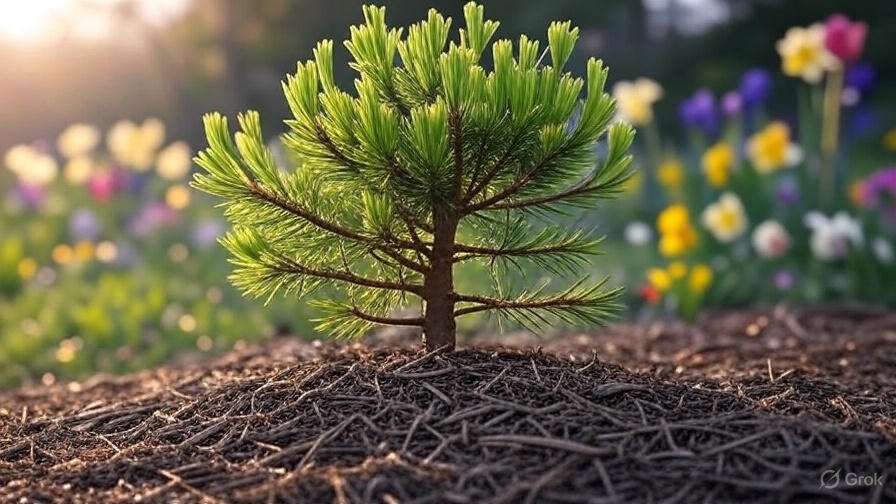
Fall  : Prepare for Winter
: Prepare for Winter
As the weather cools down, it’s time to get your Blue Pine ready for the winter months ahead:
- Pruning: Do a final prune to remove any dead or broken branches before winter sets in. Avoid heavy pruning, as this can stress the tree before it enters dormancy.
- Watering: Continue watering until the first frost. Once the ground freezes, watering should stop, as the tree enters dormancy.
- Soil Check: Check the soil’s moisture level. Well-drained soil is essential, especially before the tree enters its dormant phase.
Winter  : Protect Against the Cold
: Protect Against the Cold
Winter can be harsh, but your Blue Pine tree is well-equipped to handle the cold with proper care:
- Wind Protection: If you live in a windy area, consider installing a windbreak to prevent damage to the branches. Wind can dry out the needles, causing them to turn brown.
- Snow Care: If snow accumulates on the branches, gently remove it to prevent breakage. Be careful not to damage the branches in the process.
- Avoid Overwatering: Do not water your Blue Pine during the winter, as the tree is dormant and doesn’t require moisture. Watering in freezing temperatures can cause root rot.
By following these seasonal care tips, you’ll help your Blue Pine tree grow strong and healthy, with beautiful, vibrant blue needles that will stand out in any season!
Conclusion
Caring for a blue pine tree may require some attention and patience, but the rewards are well worth the effort. With its stunning silvery-blue needles and graceful form, a healthy blue pine tree can be the centerpiece of your landscape for many years to come. By following the essential tips outlined in this guide—from choosing the right location and watering techniques to regular pruning and protecting against pests—your tree will thrive, bringing vibrant color and beauty to your garden.

Remember, every tree has its needs, and a little care goes a long way in ensuring your blue pine tree stays healthy and vibrant. Whether you’re planting a new tree or looking to enhance the growth of an existing one, these tips will help you provide the right environment for success.
So, don’t hesitate to put these strategies into action. As you nurture your blue pine tree, you’ll not only be rewarded with a stunning landscape feature but also with the joy of watching your tree grow strong and beautiful. Happy gardening!
Frequently Asked Questions(FAQ)
What is the best location to plant a blue pine tree?
Blue pine trees thrive in full sun, requiring at least 6 hours of direct sunlight each day. They prefer well-draining soil and should be planted in an area with good air circulation. Avoid spots prone to standing water, as blue pines don’t tolerate soggy soil.
How often should I water my blue pine tree?
Water your blue pine tree deeply, ensuring the soil is moist but not soggy. During the first year of growth, water regularly, especially in dry conditions. Once established, blue pines are somewhat drought-tolerant, but deep watering is still important during prolonged dry spells.
Why are the needles of my blue pine tree turning yellow or brown?
Yellowing or brown needles on a blue pine tree can be caused by overwatering, underwatering, or poor soil drainage. It may also indicate a pest problem or fungal infection. Inspect the tree regularly, adjust watering, and consider applying a fungicide if necessary.
How do I prune a blue pine tree?
Prune your blue pine tree in late winter or early spring to remove dead, damaged, or diseased branches. Focus on maintaining the natural shape of the tree and avoid cutting too much at once to prevent stress. Pruning helps improve airflow and encourages healthy growth.
What kind of fertilizer should I use for a blue pine tree?
Use a balanced, slow-release fertilizer designed for evergreens in early spring. Avoid high-nitrogen fertilizers, which can encourage weak, leggy growth. Fertilizing once a year is typically sufficient unless soil tests show specific nutrient deficiencies.
Can I grow a blue pine tree in a pot?
Yes, you can grow a blue pine tree in a pot, but it requires a large container with good drainage. Make sure to choose a pot that allows for root expansion and use a well-draining, acidic potting mix. Be prepared to repot the tree as it grows to prevent root crowding.
How can I protect my blue pine tree during the winter?
To protect your blue pine tree from winter damage, consider wrapping it with burlap or using tree guards to shield it from heavy snow and ice. Avoid over-watering in winter and ensure the tree has good air circulation. Regularly remove snow buildup from branches to prevent breakage.
How fast does a blue pine tree grow?
A blue pine tree typically grows at a moderate rate, adding about 12-18 inches per year under optimal conditions. Growth can be slower in poor soil or during periods of drought, but with the right care, your tree will gradually reach its full height and size over time.




